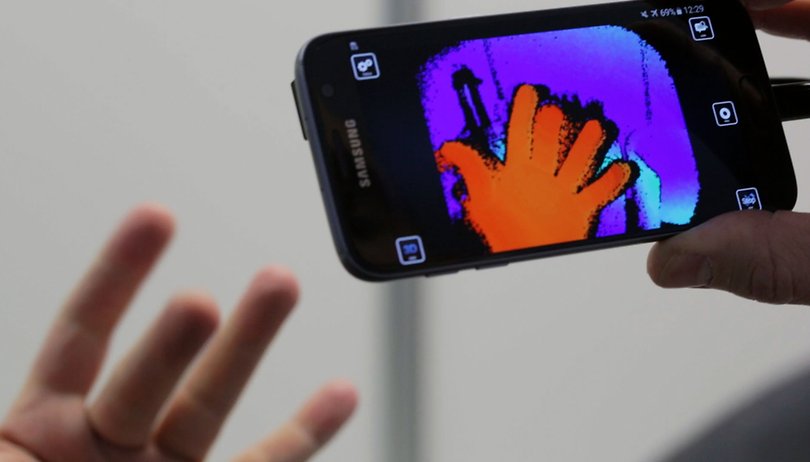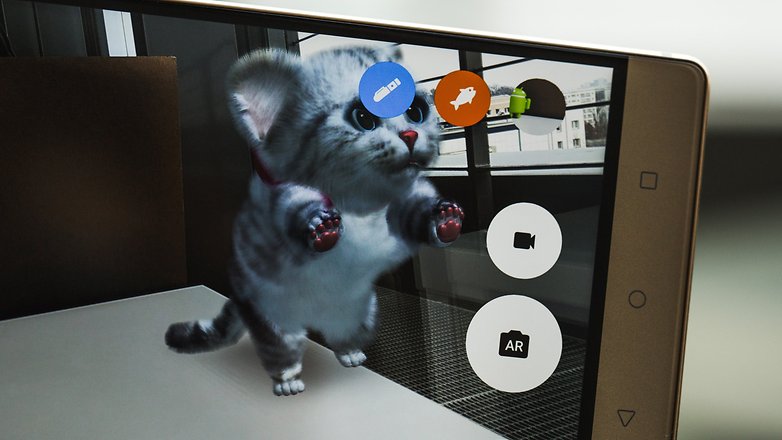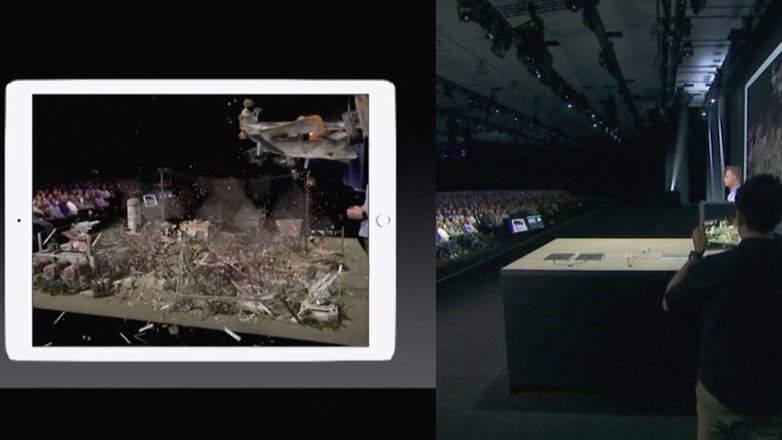This means wAR: can Google Tango keep up with Facebook and Apple?


Facebook is into VR. Snapchat is into VR. And now, it's Apple's time to jump in the ring. Its announcement is promising, and it makes us wonder: is Google lagging behind?
For a long time it was said that Apple has great ambitions in the field of augmented reality. And, who could blame the iPhone inventors? Finally, a breakthrough new feature for a smartphone. Finally, no debates about headphone jacks and charging ports.
AR apps overlay (or "augment") what a smartphone's camera sees, with pictures, 3D shapes or information. This can be as simple as a Snapchat face filter, or more exciting, like an app that puts an object into your living room or turns a table into a battlefield. All of this is visible only by smartphone.

AR can also be combined with hardware. For example, Prynt is an instant photo printer that attaches to your smartphone. You take a picture with your phone, print it, and when viewing the physical photo with your smartphone's camera afterward, it comes to life as a video! This is quite similar to the newspapers in the Harry Potter films, or the app 1600, which gives you a tour of the White House when you look at a dollar bill through your camera.
Such apps require a lot of manual work by developers. That is why Facebook created an AR Camera Platform. It gives creative app developers tools to realize ideas without ever having to reinvent the wheel to solve problems of tracking and space detection. Exciting to the platform is, above all, that there is no additional hardware needed to enable precise AR-tracking. This is really amazing, since, for example, Google Tango requires a special sensor system, without which Google's AR technology doesn't work.
Apple also impressed with the announcement and demos of ARKit at WWDC 2017. Here, Apple takes a page from Facebook's book: No additional hardware. Instead, tracking and space recognition happens via software.

Interestingly, Apple presented the AR demo with an iPad. For AR, a wide field of view matters more than having the highest pixel density. So, what would be better than a large display?
It is astonishing that Google mainly sticks to Tango and did not present to a hardware AR platform at Google I/O. The Visual Positioning System (VPS) is, at best, a first step: whoever wants to win app developers for their AR platform must reach further. Apple will be leading from September, because it's then that ARKit is comes to any iOS 11-capable iPhone or iPad. Developers will be able to offer AR apps on a wide variety of devices, which is a total game changer.
Finally, we can expect Google to take similar steps. Mountain View believes that, in a few years, many smartphones will come equipped with Tango sensors. Outside of the Google Bubble, though, hardly anyone believes such a thing. Smartphones are expensive to produce, and I doubt manufacturers are eager to add another expense by utilizing time-of-flight (TOF) cameras, even in high-end phones. Asus is daring to try with the ZenFone AR, which hits the market this summer. This should prove as a test, to see if the mistakes of the Lenovo Phab 2 Pro can be learned from, so that Tango might have a bright future as a software and hardware platform.
Google Tango is held back by its hardware requirements, while ARKit and others are not, which will make it difficult to attract consumers. Tango's strong suit is the quality of the AR experience, rather that the quantity of apps and demos. At this time, Tango is that AR platform which has earned its good reputation, while Facebook and Apple's solutions are yet unproven.
What Augmented Reality apps have you already tried? Do you see a future in it? Let us know with a comment!













I didn't really care all too much about it when nintendo started using it years ago, still don't really care now.
AR will start when Apple's developer start utilizing AR kit for their apps. Its just the sad reality that Apple popularizes a lot of technology for the masses.